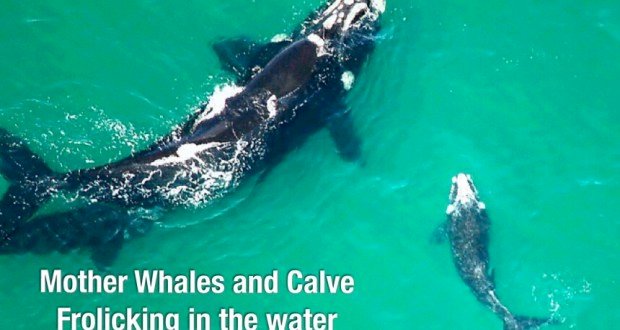READ ABOUT THE MYSTERIOUS JOURNEY OF THE SOUTHERN WHALE
Every year, beginning in July, female southern right whales (Eubalaena australis) arrive at the southern coast of Santa Catarina, Brazil. They come from as far as the subantarctic

Every year, beginning in July, female southern right whales (Eubalaena australis) arrive at the southern coast of Santa Catarina, Brazil. They come from as far as the subantarctic, thousands of miles away, to give birth and nurse their calves in shallow waters. For several months residents and tourists at the beaches or on the cliffs are thrilled to watch the whales—mothers and calves resting or frolicking in the water! *
Giant Acrobatic Marine Creatures
A female can be 52 feet (16 m) long, about the size of an articulated bus, and weigh up to 80 tons! Its massive body is generally black, sometimes with white patches on the belly. The head is enormous, a quarter of the entire body length. The mouth is long and arched. This whale has no dorsal fin as do some other species. To swim forward, it flexes its broad and deeply notched tail up and down, instead of side to side as fish do. To change direction, it moves its flippers. This is similar to the way an airplane is steered.
Take a look at : THE COLOR CHANGING ABILITY OF THE CUTTLEFISH
Curiously, despite their immense proportions, right whales have considerable flexibility, performing some amazing acrobatics. You can see them sailing, the tail sticking out of the water for long periods; lobtailing, raising the tail and slapping the water hard; and breaching, thrusting themselves out of the water and then falling back with a great splash that can be seen from far away.
Distinctive Physical Characteristics
On and around the head, the right whale has a series of whitish or yellowish callosities—roughened patches of skin covered by colonies of small crustaceans (cyamids) known as whale lice. “Each callosity pattern is unique,” explains Karina Groch, coordinator of the Brazilian Right Whale Project, “just as each person’s fingerprints are unique, enabling the identification of individual right whales. We take photos of whales’ callosity patterns when they visit our shores and keep these photos in a directory.”
Biologists say that it is difficult to tell the right whales’ age when they die because this species of whale has no teeth. They estimate the whale’s life expectancy to be at least 65 years on average. *
Curious Eating Habits
Right whales feed on tiny crustaceans. On each side of the whales’ upper jaw are filtering structures made up of hundreds of baleen plates that are fringed with fine hairs. As they swim, their open mouth allows water to filter through the baleen plates, capturing the tiny prey in the baleen hairs. By this means each whale can consume up to two tons of crustaceans a day.
Southern right whales spend the summer (January/February) feeding in the Antarctic Ocean, building up blubber. This thick layer of fat provides excellent insulation when they are in cold waters and serves as food reserves when they migrate.
Take a look at : THE MATHEMATICAL ABILITIES OF A PLANT
How Did They Get Their Name?
From the 18th century onward, whalers hunted these whales extensively in the Southern Hemisphere. They were considered the “right” whales to hunt. Why? Being slow swimmers, they were an easy catch, even for whalers in frail wooden boats that were equipped with only handheld harpoons. Besides, unlike other whales, right whales float when they are killed because of their extraordinary amount of blubber. Thus, whalers could easily drag them to the beach.
In addition, blubber and baleen were important commodities at the time. Blubber was used in street oil lamps and as a lubricant. Baleen was fashioned into things such as corset stays, buggy whips, and umbrella ribs. In fact, baleen plates obtained from one whale alone would cover the expenses of an entire expedition!
In the early 20th century, over-intensive hunting greatly reduced the right whale population, and eventually whaling was no longer commercially viable. In Brazil, the last whaling station was closed down in 1973. While there has been a slow recovery of some species, others remain critically endangered.
The right whale is definitely an outstanding example of the intricacy and great diversity of life on earth. I REST MY PEN.














